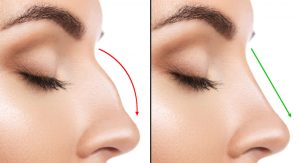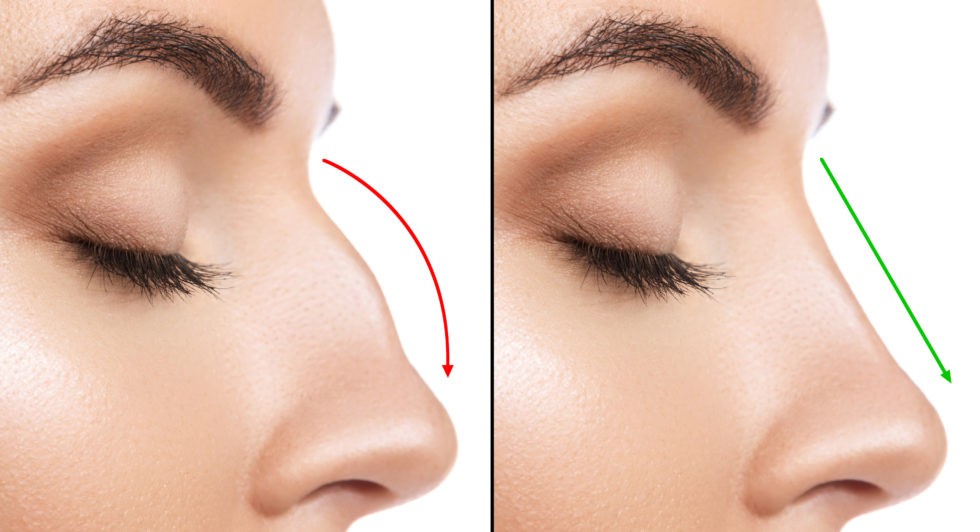Rhinoplasty, popularly known as a nose job, is surgery, which alters and reconstructs the shape of the nose. The motivation behind the procedure can be to improve breathing, adjust the nose’s appearance, or both. There are two types of rhinoplasty procedure used cosmetic surgery, which modifies the nose’s appearance, and functional surgery that reestablishes the form and purposes of the nose.
Table of Contents
Why Undergo Rhinoplasty?
The two procedures are strongly related because the purpose and function of the nose are entwined. A visible exterior asymmetry, in all likelihood, indicates crooked interior structures. Such abnormalities can mess up and block the free flow of air, making breathing harder than it should be. In many cases, altering the internal troubles translates to an aesthetically appealing exterior change, as well.
Functional-Rhinoplasty
Most people seeking functional rhinoplasty have challenges with nasal passages, too narrow and a misaligned line of cartilage, commonly referred to as the septum. The septum can be crooked because of its natural development, or it might have been misaligned because of shock.

When conducted on its own, the process of straightening the septum is known as septoplasty. Placing the cartilage that stands correctly vertical rather than inclined allows air to move easily via the nostrils.
Another functional challenge comprises hormones, sinus infections, or allergies, making turbinate distended. The turbinate is also known as the nasal conchae due to its shell-like shape, and it is responsible for warming and humidifying the air through the nasal passages. It is made of blood vessels, bone, and other tissues and comes in three pairs: inferior, middle, and superior. If the inferior pair, the biggest and the lowest of the turbinates, gets enlarged, they can impede nasal airflow on both nostrils. Hence, a turbinate reduction procedure is necessary to cure this challenge. The process involves getting rid of tissue to create more space, allowing air to come in and go out freely.
Cosmetic Rhinoplasty
Many patients seeking cosmetic surgery constantly quote asymmetry as the challenge they want to be resolved. A tilting nose or a leaning one can attract way too much attention, mainly if the rest of the face attributes are perfectly aligned. A cosmetic nose surgery helps enhance self-confidence and facial harmony.
Other challenges cosmetic rhinoplasty can handle include excessively huge nostrils, a conspicuous dip or bump on the dorsum, or a nasal tip, which is bulbous or pinched. People who feel that their nose is “too big” often discover that a single attribute is disproportional with the rest of the facial features.
In many cases, changing a central area can give outcomes, making the whole nose appear well-balanced with the mouth, eyes, and other facial features including the gap between these elements and their angle relative to one another.
Reasons to Consider a Rhinoplasty?
- To Change the Appearance of Your Nose
A lot of people considering rhinoplasty seek to change their nose appearance. Depending on what you seek and the nose’s structural makeup, cosmetic surgery might comprise the structure, showcased in prominent enhancements.
Nonetheless, there are situations where modifying several elements of the nose’s interior structure is required to realize the look you seek. Generally, the procedure is conducted to alter the general shape of the nose, making it narrower or huge to enhance the face’s general proportion.
- To Improve Breathing
Genetic anomalies, growths, and injuries inside the nose can block airflow into the nose; hence, making breathing hard. Under these circumstances, the process includes work on the passageways and shape modification so air can flow freely.
This kind of procedure demands the alteration of the septum. Altering the position of the septum is considered an important surgery since the aim involves a noticeable improvement in purpose.
- To Complement Your Ethnicity
Ethnic rhinoplasty is a method, which transforms the nose look while remaining true to the patient’s ethnicity, improving a person’s nose and balancing their physical attributes without compromising the nasal attributes, which illustrate different ethnicities. The aim is to offer a person a lovely, natural-looking nose, maintaining harmony with other facial features.
What to Expect?
First, a doctor carries out a detailed analysis and discusses your goals for the procedure. There are procedures, which can address both breathing and cosmetic concern simultaneously.
The doctor takes photographs during the consultation session and goes through your medical history, age, and ethnic background. The doctor will break down how the interior structures of the nose can be sculpted.
The exercise can be conducted in a hospital or outpatient surgery center. It is done under anesthesia to safeguard your well-being.
If the procedure demands cartilage grafts, the doctor starts harvesting small cartilage from other body parts. This allows the doctor to add cartilage where it is scarce. Minute dissolvable stitches are embraced.
Subsequently, the doctor will mount a splint on the nose to cover it and hold the structure. There are cases when the absorbent dressings are placed within the nose. A team involved with the procedure will later provide you with care instructions for getting the optimum results, tackling pain, and curbing infection. These might compromise instructions regarding:
- Swallowing pain killers
- Deploying cold compresses to reduce potential swelling
- Raising the head while lying in bed
- Staying away from strenuous activity when recovering
What to Anticipate During Recovery?
No matter the procedure, a rhinoplasty patient should expect to anticipate wearing a splint for roughly five days after the surgery. The splint holds the nasal tissues in position and guarantees that they correctly get better within their new alignments.
Swelling and bruising should be anticipated, extending for more than a fortnight. Once the swelling subsides and the skin goes back to its original color, the outcomes will be quite visible. Nonetheless, it is essential to know that the nose can take substantial time before it properly heals; hence, full recovery may not occur in several months or even a year.
Also read – Difference between a Functional and Cosmetic Rhinoplasty












